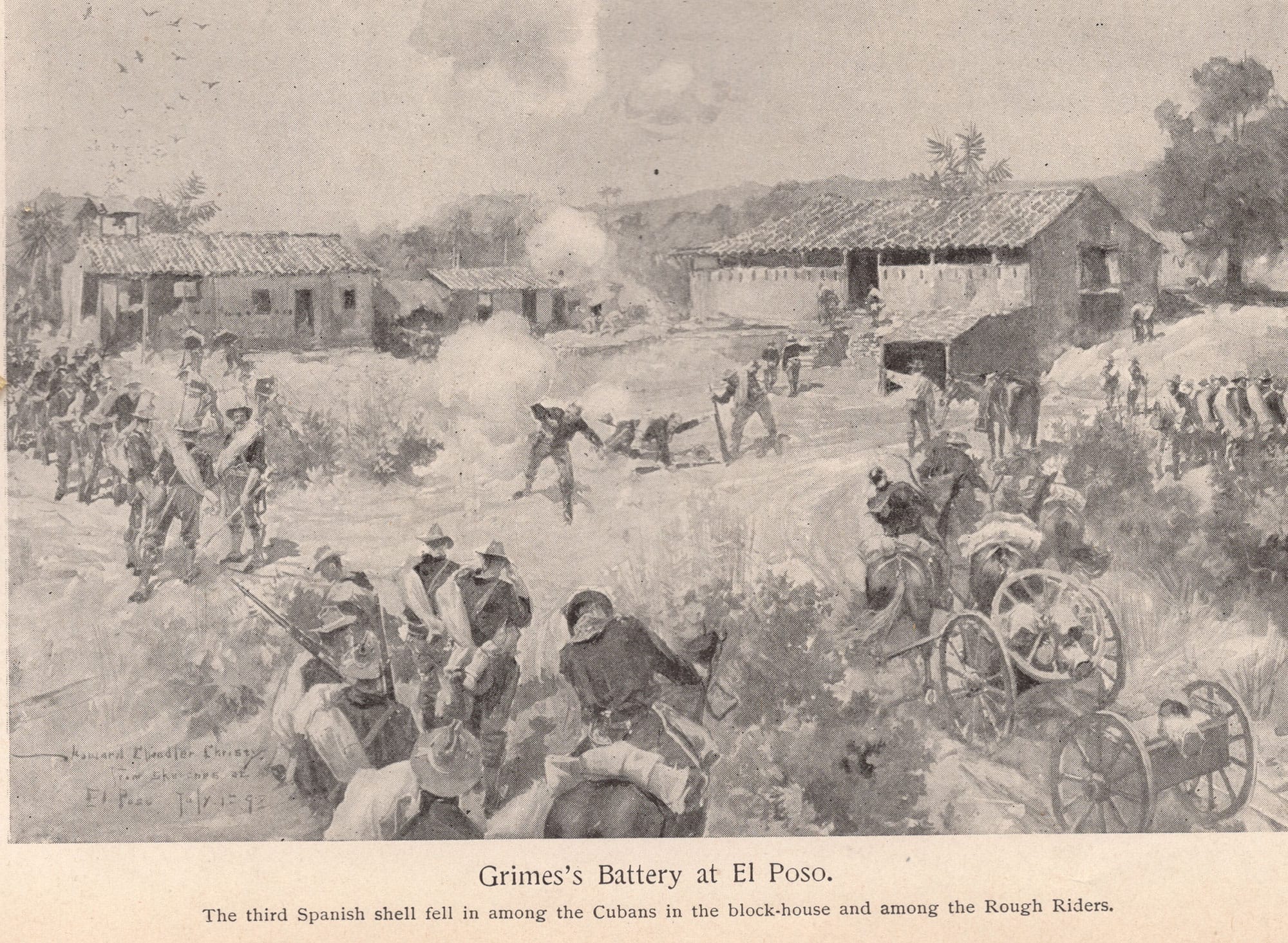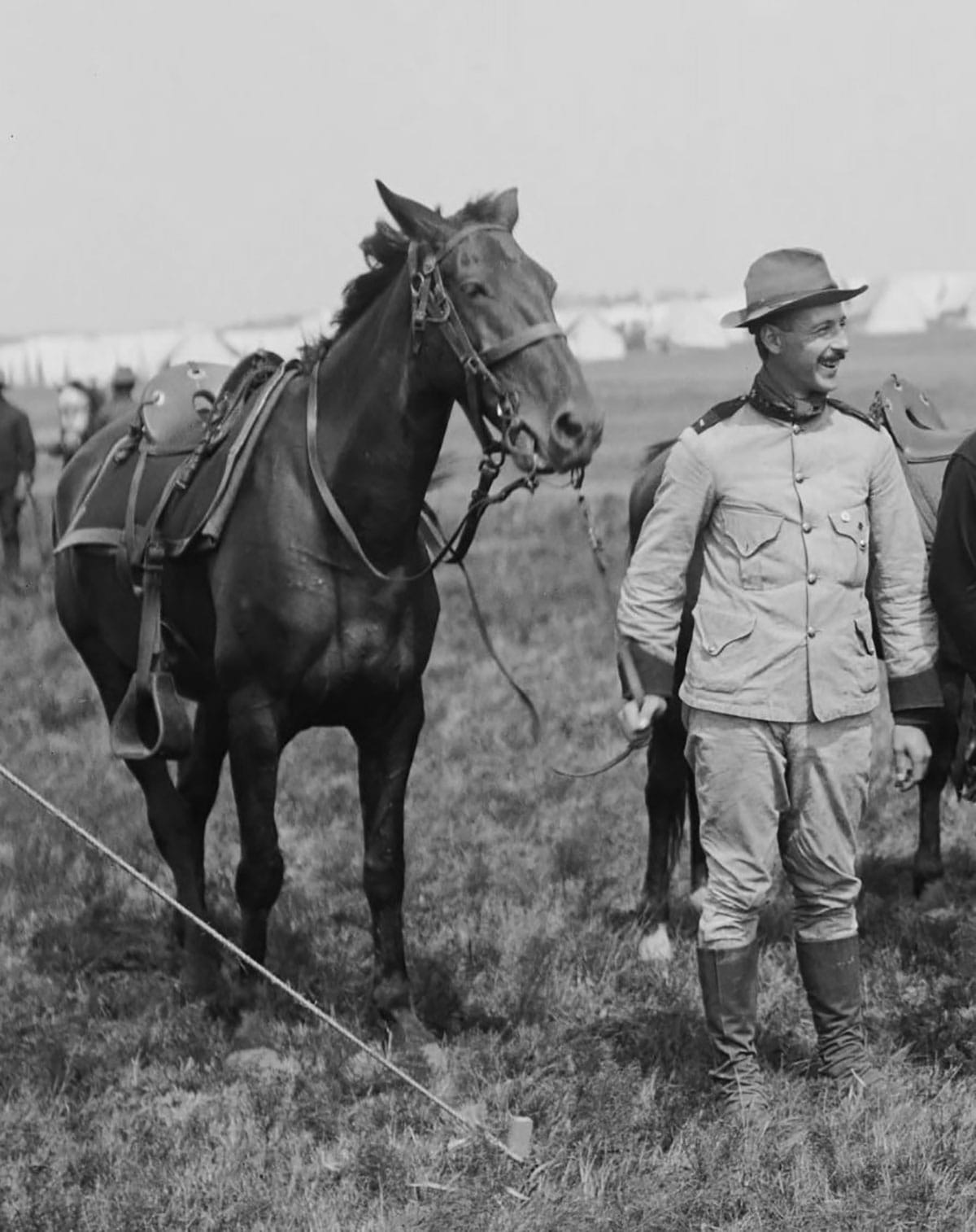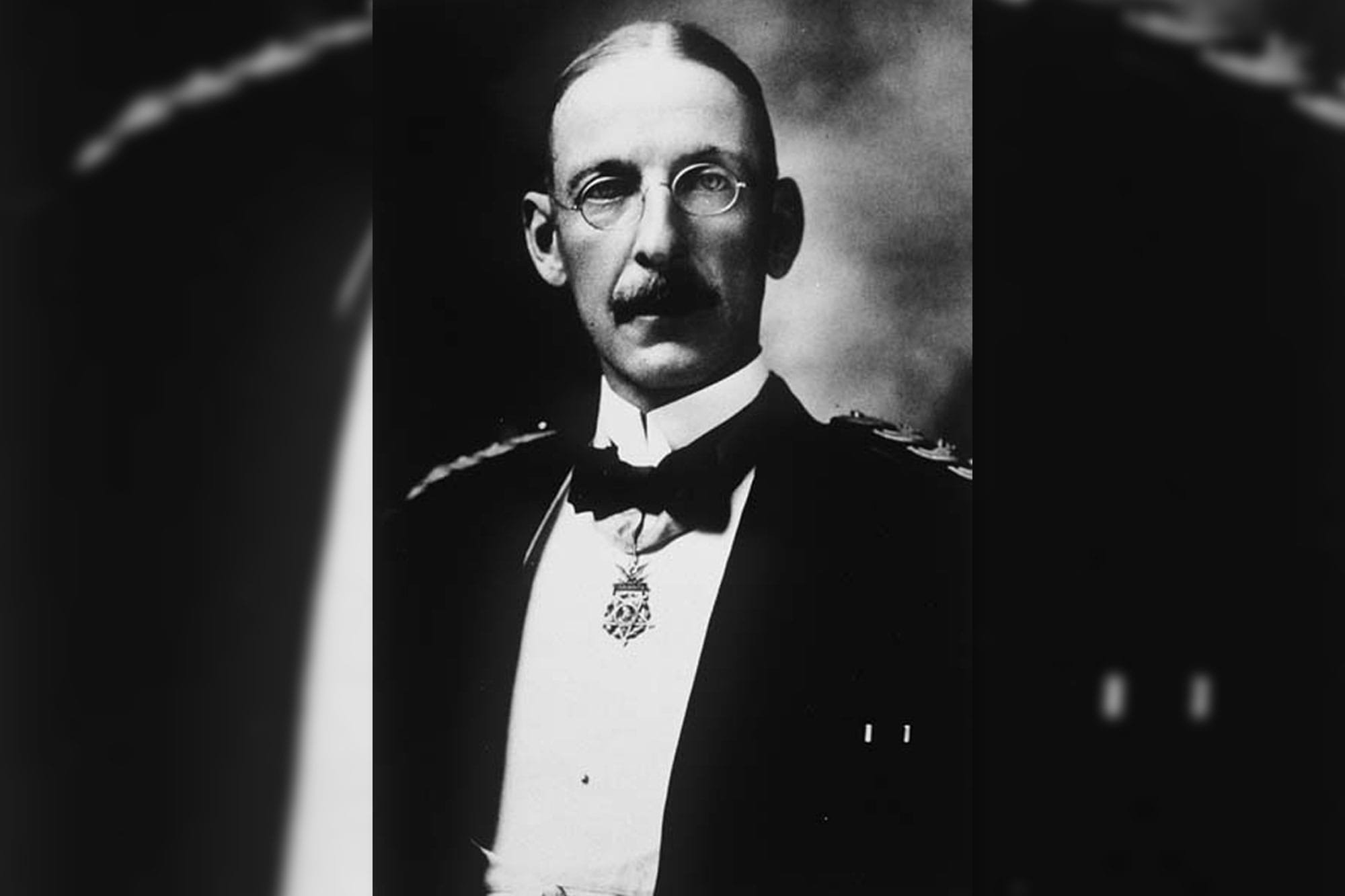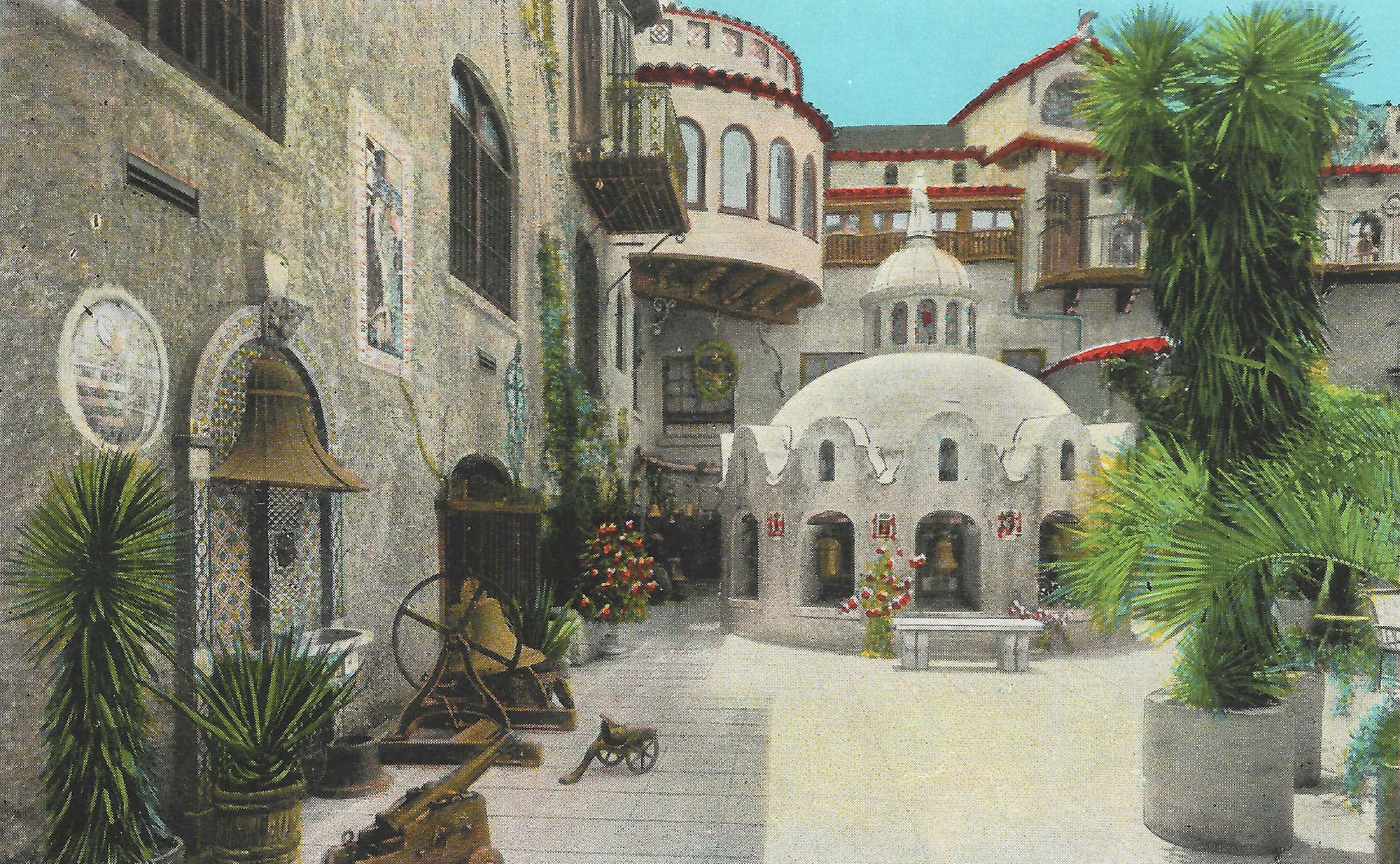The Raincross Gazette is on Holiday Break
The Gazette's 2-person newsroom is on a publishing break through holidays. Regular publishing will resume on Monday, January 5, 2026.
The San Juan Hill Bell at the Mission Inn not only adds to the hotel's eclectic charm but also commemorates a significant historical event.

“Well, what does he want with all those bells? He’s got the fiercest appetite for bells of any man I ever saw.” That is the description of Frank A. Miller of the Mission Inn that a curio shop owner in England gave to a Los Angeles Times reporter. And how true that was. In the 1946 issue of The Bells & Crosses of the Glenwood Mission Inn, Riverside, California, 748 bells are listed and described. No visitor was ever able to see all of them as they could not be on display simultaneously, and even those on display were scattered in all corners and niches of the Inn. However, certain bells became more famous and were part of the itinerary for many visitors. The Nanking bell (Bell #272), rising six feet five inches high, has caught visitors' attention for many years as it has stood in various places in the courtyard in front of the Inn. Those interested in Riverside area history make sure to see the Agua Mansa Bell (Bell #359) from the early Hispanic community along the Santa Ana River. Then there is the bell (Bell #54) hanging in the Garden of the Bells, the oldest dated bell in Christendom, cast in 1247. All of these have unique stories that become familiar to many visitors to the Mission Inn.
There is another bell in the collection that needs its story told. That is Bell Number 621, the San Juan Hill Bell. The bell hung in the cupola of the El Poso Rancho. The ranch house lay in the shadow of El Poso Hill, not too far from the city of Santiago on the southern tip of Cuba. During the Spanish-American War in 1898, the forces of the United States, including the Tenth Cavalry and Colonel Teddy Roosevelt’s Rough Riders, marched on Santiago to defeat the Spanish forces. The night before the famous battle, which included the charge up San Juan Hill by the Rough Riders and other units, many of the men of the First and Tenth Cavalry and the First Volunteer Cavalry (the Rough Riders) were camped near the farmhouse of the El Poso Ranch. Battery units opened fire on the Spanish entrenched in San Juan. The Spanish artillery answered, killing some in the ranch courtyard, including some of the Rough Riders, and a shell brought down the bell in the ranch house tower. The next day, July 1, 1898, the United States forces charged up San Juan Hill in what became the war's bloodiest and most famous battle. Captain James Robb Church, an army surgeon with the First Volunteer Cavalry (the Rough Riders), was in the thick of the struggle up the hill. After the battle, Church rescued the fallen bell from the demolished farmhouse and brought it home as a memento of the fight.


Engraving of the El Poso Ranch House with the bell in the tower (left) and Captain James Church in Cuba (right). (Public Domain)
Captain Church had already distinguished himself a few days earlier during the battle at Las Guasimas on June 24. At Las Guasimas, the Tenth and First Volunteer Cavalry attacked the Spanish position, blocking their forward march towards Santiago. With the army suffering multiple losses and under heavy fire, Captain Church braved the Spanish guns again and again to carry wounded soldiers to safe positions.
Eight years later, on January 10, 1906, at the White House, James Church was awarded the Medal of Honor by his former Rough Rider commander, President Theodore Roosevelt. The ceremony occurred in the White House in the President’s private office and adjoining Cabinet room.

James Robb Church was born in Chicago on October 11, 1866. He attended Princeton University and excelled at football and lacrosse, graduating in 1888. He then attended Columbia University Medical School. Upon the outbreak of the Spanish-American War, he volunteered as a surgeon in the Rough Riders under Dr. Leonard Wood.
James Church remained in the army as a surgeon, rising to the rank of colonel. He died at the age of 57 on August 26, 1923, because of the gas mask studies he conducted during World War I. Colonel James Robb Church was buried at Arlington National Cemetery.
Colonel Church’s brother, Judge Alonzo Church of Newark, New Jersey, visited the Mission Inn in July 1931. Like his brother, he graduated from Princeton University and, while staying at the Inn, found a kinship with DeWitt Hutchings, also a graduate of Princeton. Judge Church, upon hearing about the association of President Roosevelt with the Mission Inn and the Presidential Suite in Roosevelt’s honor, the judge decided the right place for the bell that his brother rescued from the farmhouse near San Juan Hill was as part of Miller’s famous Bell Collection at the Mission Inn. The Mission Inn was a fitting place to honor comrades in arms, Colonel James R. Church and President Theodore Roosevelt, with the display of the San Juan Bell. The bell arrived in Los Angeles on September 24, 1931, where DeWitt Hutchings received it. Upon arrival at the Inn, the bell was placed on exhibit in the Presidential Suite. There, the San Juan Hill Bell (Bell #621), as it was identified, remained for many years. The 1951 edition of The Bells & Crosses of the Mission Inn booklet still states that this bell, with a piece missing from its lip, resided in the Presidential Suite. The bell was moved sometime after that, possibly when the Presidential Suite was transformed into the Presidential Lounge in 1958. A postcard shows the bell, with a piece missing from its lip, hanging from a beam in one of the windows of the Ramona Dome in the Garden of the Bells.

With the donation of this famous bell, another artifact connected to Teddy Roosevelt came to reside at the Mission Inn. Teddy’s stay in 1903 set the stage for many memories and historical objects to commemorate the visit.
Let us email you Riverside's news and events every morning. For free!